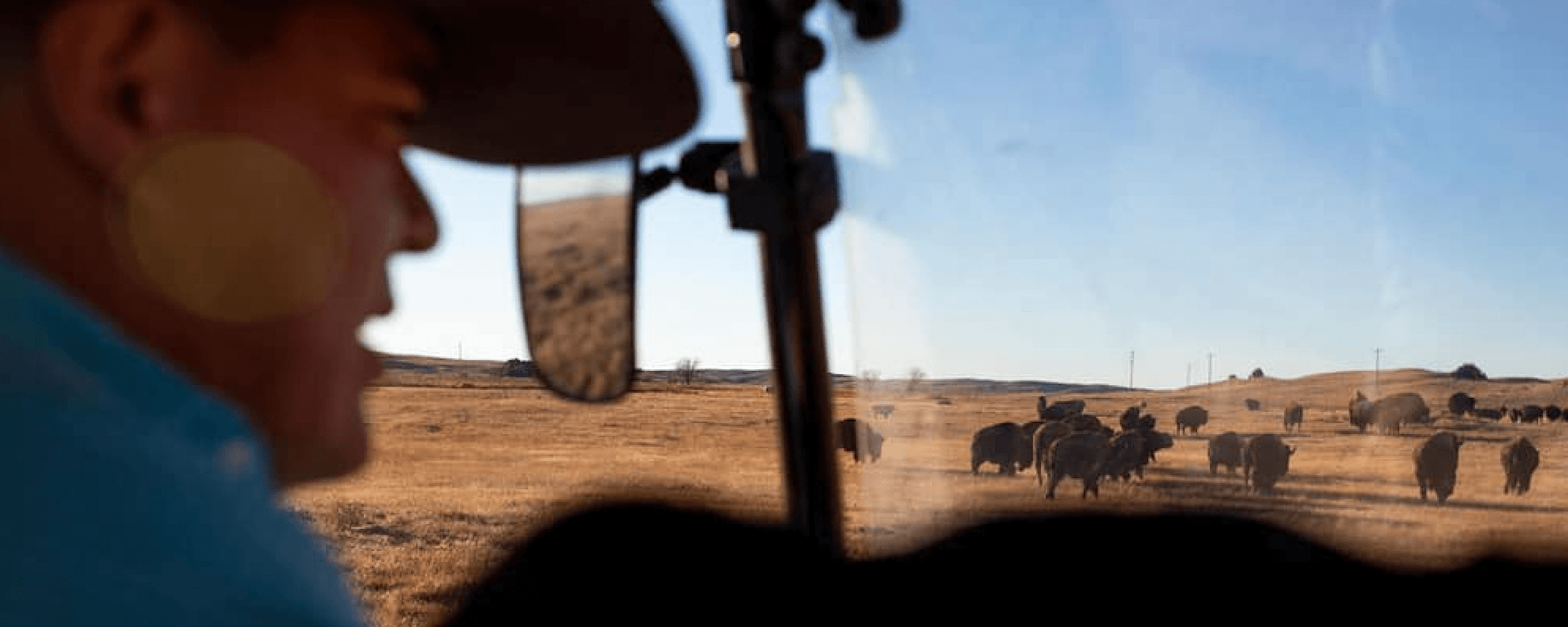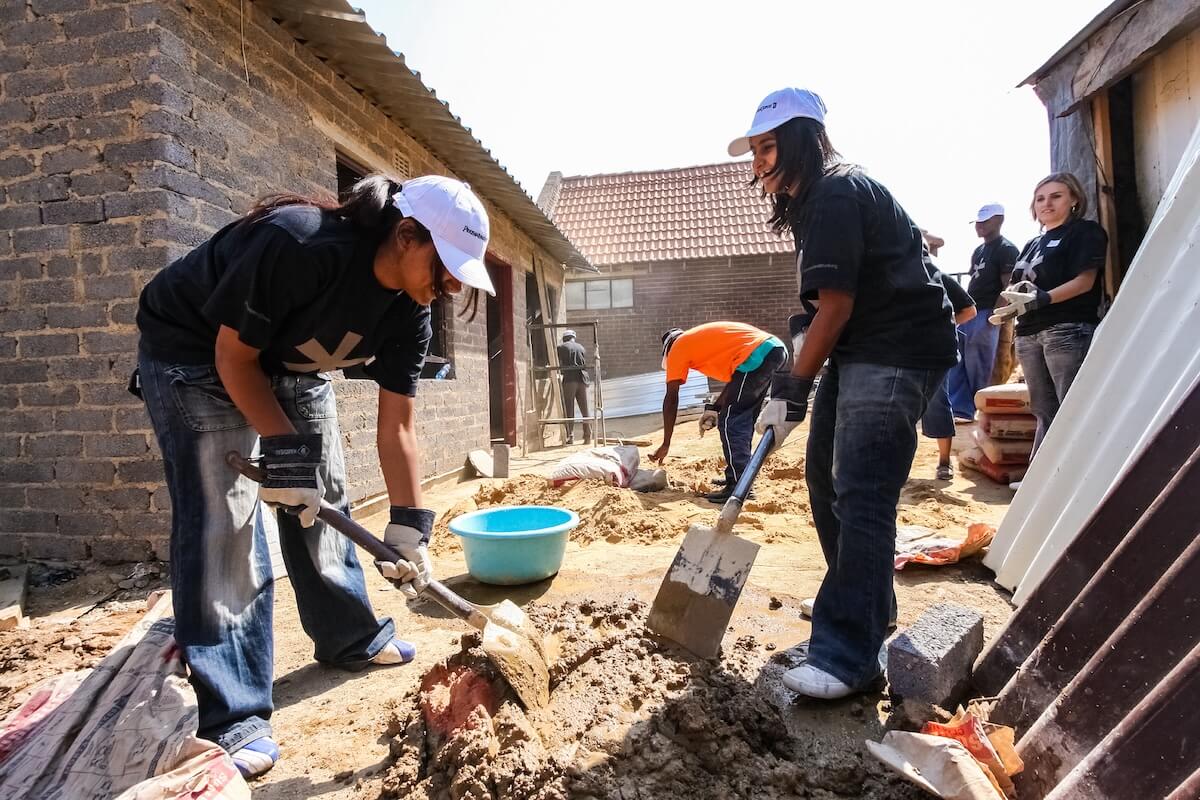Greetings, Agents of Impact!
Featured: Catalytic Capital
In Indian Country, Wolakota Buffalo Range provides lessons for indigenizing catalytic capital. It took five years of hard work for the Siċaŋġu Lak̇ota Oyate people to reestablish a 1,000-head buffalo herd on the Rosebud Sioux tribal lands in South Dakota. The 28,000-acre Wolakota Buffalo Range now supports one of the world’s largest Native-owned buffalo herds, and represents a long-held, shared vision to restore the tribal community’s bonds with the buffalo and the health and biodiversity of degraded land. “What’s made this project successful is the relationships, and the shared risk our partners took on early in the partnership,” says Aaron Epps of Siċaŋġu Co, which directs the tribe’s economic development efforts. Grants are overlooked as an essential form of catalytic capital. “We found that grants are foundational to the definition of catalytic capital in Indian Country,” concludes “Indigenizing Catalytic Capital,” a new report from First Peoples Worldwide.
- Financial sustainability. The Wolakota herd, now at full capacity, can yield about 75,000 pounds of meat each year. The range is looking to sell at a premium to off-reservation wholesalers in order to sell locally at subsidized prices. Grant and flexible debt funding has put Wolakota “on pace to be financially sustainable over the long-term,” Epps tells ImpactAlpha.
- Catalytic capital +. The World Wildlife Fund funded a feasibility study and helped Wolakota raise more than $300,000 from WWF’s donors. Turner Foundation covered early operational costs and connected Wolakota’s team to Turner Ranches, one of the largest bison ranch operators in the world. Bush Foundation helped Wolakota cover a $1.8 million capital gap for range infrastructure. “No one came in and told us, ‘This is how you should do it,’” Epps said. “Successful projects and businesses in tribal communities have to be community-driven.”
- Socially-driven. There are an estimated 325,000 Indigenous-owned companies in North America transacting $38 billion in business each year. Yet private equity and venture capital have a negligible presence in Indian Country, and Native-led organizations receive less than one quarter of one percent of philanthropic funding. “A lot of Native entrepreneurs don’t hype their social thesis, even though it runs right alongside their financial thesis,” says Kate Finn, who directed First Peoples Worldwide’s research. “There is a huge opportunity there for impact investors.”
- Keep reading, “In Indian Country, Wolakota Buffalo Range provides lessons for indigenizing catalytic capital,” by Jessica Pothering on ImpactAlpha. Catch up on all of ImpactAlpha’s coverage of Catalytic Capital, sponsored by the Catalytic Capital Consortium.
Dealflow: Climate Finance
Prime Coalition’s Azolla Ventures raises $239 million to catalyze climate capital. Prime Coalition launched independently run Azolla in 2021 as a successor to its $50 million Prime Impact Fund. Azolla’s blended capital fund combines $80 million in philanthropic capital with $159 million in impact-aligned investments to boost promising early-stage climate solutions. Dozens of investors backed the fund, including the Grantham Environmental Trust, Cisco Foundation, family offices, donor advised funds, and private foundations. Some wrote checks as small as $10,000. That helped Azolla surpass its $200 million target. “All of this capital is designed to focus on climate solutions that are unlikely to receive sufficient funding in other places,” Azolla’s Amy Duffuor told ImpactAlpha.
- Climate gaps. When Prime was founded a decade ago, early-stage climate capital was scarce. Today, the sector is attracting increasing interest, bucking broader market trends (see, “Amid venture malaise, climate investors spot opportunities in emerging solutions and overlooked markets”). But gaps remain. Many technologies with big commercial and decarbonization potential have long development timelines, lack successful comparisons, or have other risks that scare investors off. And sectors such as alternative proteins have come in and out of investor favor. Prime’s portfolio companies have gone on to raise capital from commercial investors, including Breakthrough Energy Ventures, Prelude Ventures and Lowercarbon Capital.
- Additionality. Azolla will write average checks of $2 million, with equal amounts catalytic and commercial capital. Azolla assesses the commercial potential of the investments while Prime evaluates their impact potential and the need for catalytic capital. Azolla has made six investments since its first close last October, including industrial heat pump maker Heaten, indoor carbon removal company Carbon Reform, and Funga, which optimizes forest fungi to sequester more carbon and boost the resilience of forests. Its latest investment, Scalvy, makes modular electric powertrains that can speed up EV development and deployment.
- Learn more.
Suffolk Technologies raises $110 million for sustainable construction innovation. Suffolk Technologies will make investments of up to $5 million each in early-to-growth stage tech startups developing sustainable innovations for the built-environment. The venture fund is an affiliate of privately held Suffolk Construction, a Boston-based builder with $5 billion in revenues. It will source some deals through Boost, its accelerator program, which has graduated ventures like Moxion Power, which makes electric storage for construction sites, and Wint, which uses AI sensors to reduce water leaks.
- Strategic LPs. More than half of the fund was committed by construction and real estate industry partners. Switzerland-based Holcim invested alongside several family offices, high net worth investors, and institutional investors.
- Dive in.
Spring Lane Capital clinches $290 million for second sustainable infrastructure fund. The Boston- and Montreal-based firm will use the capital for debt and equity investments in green energy, waste, food and transportation projects and companies. Spring Lane announced a $56 million investment in Argo Development Partners, a developer of sustainable agricultural materials, such as biofuels, organic fertilizer and green ammonia.
- Deployment. The raise brings Spring Lane’s total assets under management to $447 million. In April, the firm provided $31 million in debt and equity to EV financing firm Spring Free EV. The fund has also invested in charging infrastructure provider EVCS Charging Solutions and renewable natural gas company Andion.
- Share this.
Dealflow overflow. Other news crossing our desks:
- Carlyle secured $591 million for a planned $2 billion renewable and sustainable energy fund, its second, according to an SEC filing. The fund has made four investments in green ammonia, solar and storage projects. (Carlyle)
- A partnership between Canada Pension Plan Investment Board and Dutch hydrogen project developer Power2X will invest €130 million ($145 million) in green molecule projects. (CPP Investments)
- Nexus PMG raised $50 million in growth equity funding from Greenbacker Capital, Liberty Mutual and the Ontario Power Generation Pension Fund to support waste-to-value projects. (AFN)
- Aequitas Impact Fund, the impact fund of Canada’s Desjardins International Development, provided a $2 million loan to a Nicaragua-based unit of Pro Mujer (see, “Agent of Impact: Carmen Correa, Pro Mujer”). (MicroCapital)
Impact Voices: Family Offices
Five tips for attracting catalytic capital from wealthy individuals and family offices. High net worth individuals, or HNIs, and family offices are a valuable – and underutilized – source of catalytic capital. In an earlier guest post on ImpactAlpha, Toniic’s Dario Parziale showed that a significant percentage of impact-focused family offices and HNIs would accept lower or uncertain returns and additional risk compared to commercial investors. To follow up, Parziale shares suggestions for mission-driven enterprises looking to fundraise from such investors.
- Counterfactuals. Parziale suggests comparing “what likely happens in a world where investors make an investment to what likely happens if they do not.” Demonstrating the counterfactual makes an investment more attractive to HNIs and family offices by proving that it is catalytic, not just concessionary.
- Interest in innovation. HNIs and family offices are “attracted to opportunities where they can help facilitate innovations and test new strategies and structures,” explains Parziale. Investment vehicles that allow pooling or syndication of family capital could speed responses to important problems and promising opportunities.
- Keep reading, “Five tips for attracting catalytic capital from HNIs and family offices,” by Toniic’s Dario Parziale on ImpactAlpha.
Agents of Impact: Follow the Talent
Spring Lane Capital brings on Jason Scott, ex- of Encourage Capital and Renewable Resources Group, as entrepreneur-in-residence… Mirova is looking for an RFP project manager in Boston… Builders Vision has an opening for an operations accountant in Chicago.
The Charter School Growth Fund is looking for a remote investment manager… Mercy Corps Ventures is on the hunt for a remote consultant… Impact Partners is hiring a project assistant in Paris… Global Partnerships is recruiting a global portfolio impact officer in Nairobi… ABC Impact seeks an investment analyst or associate in Singapore.
Thank you for your impact.
– July 13, 2023











